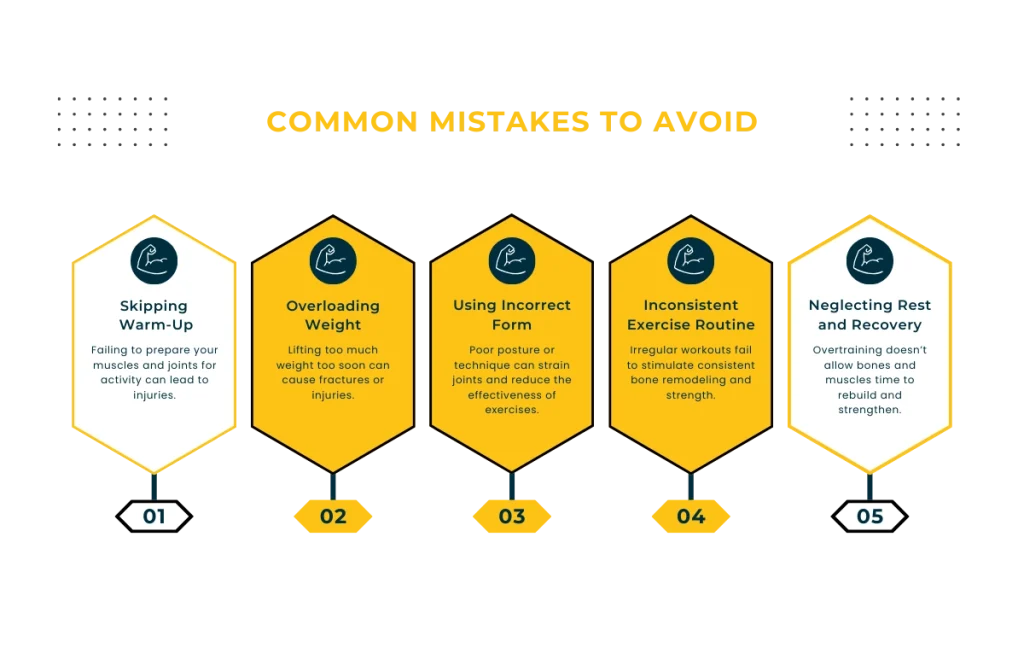Maintaining strong bones is essential for overall health, especially as we age. Exercise to strengthen bones plays a vital role in building and maintaining bone density, preventing fractures, and ensuring mobility in later years. Whether you’re young or older, incorporating the right exercises into your routine can help protect your bones for life. In this article, we’ll explore the best types of exercises to strengthen bones and how they benefit your skeletal system.
How Does Exercise Improve Bone Health?
When you engage in regular exercise, particularly weight-bearing and resistance training, your bones respond by becoming stronger. This happens because the stress placed on your bones during these exercises encourages the body to deposit more calcium and other minerals, which are essential for bone density. Over time, this can prevent conditions like osteoporosis and keep your bones resilient.
Exercise to strengthen bones also improves circulation, delivers essential nutrients to the bones, and enhances the strength of muscles that support your skeletal system.

Which Exercises Are Best for Keeping Bones Healthy?
Not all exercises impact bone health equally. The best exercise to strengthen bones focuses on weight-bearing and resistance movements. These include activities that make you work against gravity, such as:
- Walking: One of the simplest and most accessible ways to exercise to strengthen bones.
- Resistance training: Using weights or resistance bands to target specific muscle groups.
- Running or jogging: High-impact activities that stimulate bone growth.
- Jumping rope: Great for adding quick, high-impact bursts that strengthen your legs and hips.
- Stair climbing: This works the muscles around the hips and knees, areas often prone to bone density loss.
Incorporating these exercises into your fitness routine is essential for keeping your bones strong and healthy.
8 Workouts for Strong Bones
Let’s dive into 8 specific strong bones exercise programs that will help improve your bone density:
- Squats: This compound movement exercise to strengthen bones in your hips, legs, and lower spine.
- Push-Ups: A weight-bearing exercise that improves bone density in your arms and upper body.
- Lunges: Target your leg bones and improve balance, which can help prevent falls.
- Deadlifts: This resistance exercise focuses on your spine and lower body.
- Dumbbell Rows: Strengthens the bones in your arms and upper back.
- Jumping Jacks: A high-impact, cardio exercise that stimulates bone growth.
- Planks: Although low impact, planks help exercise to strengthen bones by engaging your core.
- Leg Press: Focuses on building strength in the bones of your legs and hips.
Adding these exercises to your workout routine will ensure that you’re engaging your entire skeletal system.
Starting a Program for Bone Health Fitness
Creating a strong bones exercise program is easier than you might think. Start by incorporating weight-bearing exercises into your routine at least 3-4 times a week. Begin with bodyweight exercises if you’re a beginner, then gradually increase the resistance by adding weights or resistance bands.
- Day 1: Squats, push-ups, lunges
- Day 2: Walking or jogging, jumping jacks, deadlifts
- Day 3: Rest and recovery
- Day 4: Stair climbing, dumbbell rows, planks
Consistency is key when it comes to maintaining bone health, so ensure that your exercise plan is balanced and targets all major areas of your body.
Age and Bone Health Fitness
As we age, our bones naturally lose density, especially for women after menopause. But it’s never too late to start an exercise to strengthen bones program. While high-impact exercises might not be suitable for everyone, there are still plenty of low-impact options, such as walking, swimming, and light resistance training, that can effectively slow down bone density loss.
For older adults, focusing on balance exercises like yoga or Pilates can also help prevent falls and fractures.
Body Weight and Bone Health
Maintaining a healthy body weight is crucial for bone health. Being underweight increases the risk of bone fractures because less muscle supports your bones. On the other hand, excessive weight can place too much stress on your bones, especially in your legs and spine. The best approach is a balanced weight supported by consistent exercise to strengthen bones routine and a healthy diet.
Best Diet for Bones and Joints
What you eat plays a huge role in maintaining bone health. A best diet for bones and joints includes foods rich in calcium, vitamin D, and other bone-friendly nutrients. Some of the top foods include:
- Dairy products: Milk, cheese, and yogurt are excellent sources of calcium.
- Leafy greens: Vegetables like kale, broccoli, and spinach provide important vitamins.
- Fish: Fatty fish like salmon and sardines are rich in vitamin D and omega-3s.
- Nuts and seeds: These contain magnesium, which helps with calcium absorption.
A well-rounded diet, paired with exercise to strengthen bones, ensures that your bones remain strong and resilient throughout your life.
Conclusion
In conclusion, regular exercise to strengthen bones is one of the most effective ways to maintain and improve your bone health, no matter your age. By combining weight-bearing and resistance exercises with a nutrient-rich diet, you can protect your bones and enhance your overall physical health. Whether you’re just starting or have been exercising for years, keeping your bones strong will help you live a healthier, more active life. Now is the perfect time to start focusing on your bone health!




